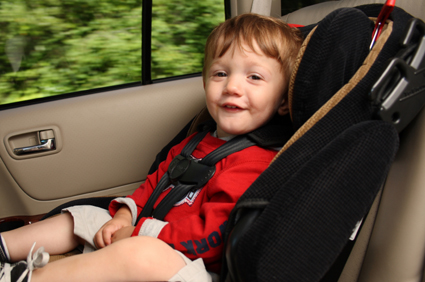Finally!
Finally, the dangers of homebirth are gaining attention in the wider scientific community and the lay press.
I’ve been making the homebirth-seatbelt comparison for years (see, for example, Unnecesseat belts from 2011) and now it’s been taking up by ethicists.
The paper Homebirth and the Future Child by OB-GYN Lachlan de Crespigny, and Oxford Philosophy Professor Julian Savulescu is deservedly getting widespread attention in the mainstream media.
From the paper:
Debate around homebirth typically focuses on the risk of maternal and perinatal mortality and morbidity – the primary focus is on deaths. There is little discussion on
the risk of long-term disability to the future child…… [O]ne silent tragedy is the long-term disability that can result from homebirth. And it is this risk that we will argue weighs heavily against homebirth. In this paper, we will argue that both
professionals and pregnant women have an ethical obligation to minimise risk of long-term harm to the future child…
This is not merely a theoretical argument. I’ve written about several babies who suffered hypoxic brain injury at homebirth:
Conflicted: successful VBAC, brain damaged baby
Another homebirth, another brain injured baby, but the midwife was awesome
Sam: a victim of homebirth
But the baby’s heartrate was fine right before it dropped nearly dead into the homebirth midwife’s hands
Two recent studies, released since de Crespigny and Savulescu submitted their paper for publication, have shown that the risk is extraordinarily high.
The most important paper on homebirth published in 2013 showed that homebirth increases the risk of a 5 minute Apgar score of zero by nearly 1000%!
Grunebaum et al. found:
Home births (RR 10.55) and births in free-standing birth centers (RR 3.56) attended by midwives had a significantly higher risk of a 5-minute Apgar score of zero (p<.0001) than hospital births attended by physicians or midwives. Home births (RR 3.80) and births in free-standing birth centers attended by midwives (RR 1.88) had a significantly higher risk of neonatal seizures or serious neurologic dysfunction (p<.0001) than hospital births attended by physicians or midwives.
A poster entitled Home birth and risk of neonatal hypoxic ischemic encephalopathy, to be presented at the forthcoming February meeting of the Society of Maternal-Fetal Medicine also looks at this issue.
The authors explain:
Women who delivered at home had 16.9 times the odds of neonatal HIE compared to women who delivered in a hospital (p <0.01). The odds remained significant after controlling for maternal age, ethnicity, education level, primary payer and prepregnancy weight (aOR 18.7, 95% CI 2.02-172.47). After controlling for mode of delivery the odds of HIE increased for home birth compared to hospital birth (aOR 32.9, 95% CI 3.52-307.45).
In other words, homebirth increased the the odds of a baby needing cooling therapy for brain damage due to lack of oxygen by more than 18 fold.
Why is there an increased risk of brain injury at homebirth? de Crespigny and Savelescu point to multiple factors.
First:
Homebirth is expected to cause a delay in diagnosis, delivery and/or transfer following an acute intrapartum event with rapidly developing hypoxia, acidosis and asphyxia. Such a delay
will necessarily result in a prolonging of asphyxia. The best intrapartum fetal heart rate parameter for predicting newborn acidemia [ed. decreased blood pH due to low oxygen] is minimal or absent variability, with or without the presence of late decelerations. This is difficult to detect with intermittent auscultation alone, and even if diagnosed there will be the inevitable delay in expediting hospital delivery, which may be time critical…
Second:
[O]xygen, bag and mask ventilation, intubation, chest compressions and resuscitative medications, which cannot be optimally provided in a homebirth environment. It would be expected
that in some cases inadequate neonatal resuscitation will not only convert potential future normality to survival with morbidity, but may also convert potential normality or mild morbidity to survival with major morbidity.
The third factor is delay in accessing treatment for the brain injury:
Transfer of an infant who has suffered a severe asphyxial insult from home to hospital may delay the commencement of neuroprotective strategies, particularly therapeutic hypothermia. This will worsen outcome. The therapeutic window can be too short for infants requiring transfer to a tertiary referral centre.
What about women’s right to choose place of birth?
Homebirth is said to be about the ability of women to make a fundamental choice about their own bodies. Homebirth advocates often wish to keep birth free from medical interventions.
Homebirth decisions may also be influenced by what is fashionable or the latest cause célèbre.
The authors address a variety of legal and philosophical arguments and then conclude:
Having a homebirth may be like not putting your child’s car seat belt on. The risk of being injured in a single trip by not wearing a seat belt is extremely low. Still, we expect people to wear a seat belt to make the risks as low as possible, despite some inconvenience and diminution of driving pleasure. Most children will be unharmed. Some trips are very safe. And
wearing a seat belt will not remove all risk of injury or death. Indeed, wearing a seat belt in an accident will, on rare occasions, cause greater injury than not wearing a seat belt. But on
balance it is much safer with a seat belt…Homebirth appears to be a risk factor for the future child, or at least so uncertain, that it should be discouraged, pending further research. Doctors and midwives often do not currently tell patients that there are predicatable avoidable risks of future child disability with homebirth. They should do so.
Amen!


